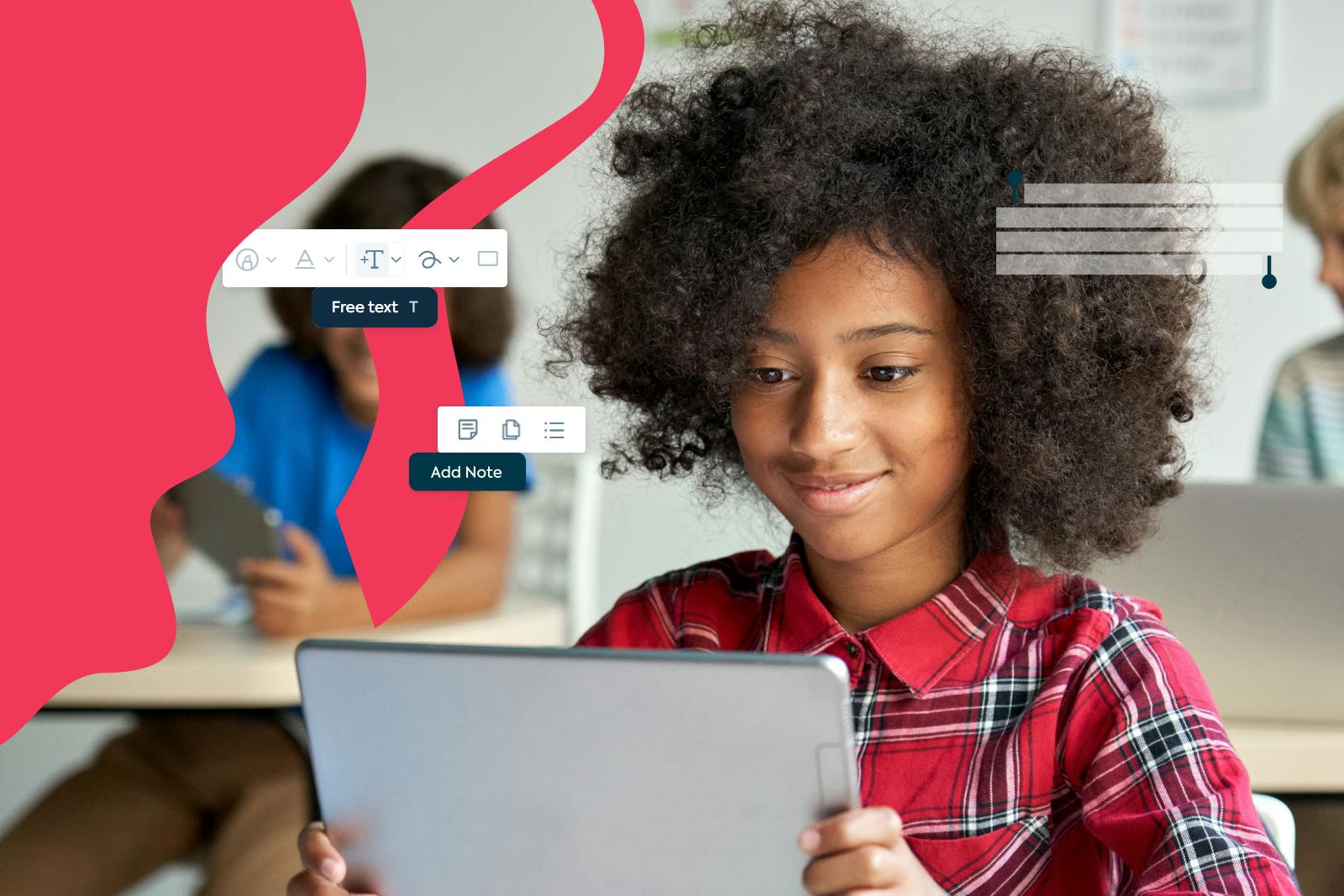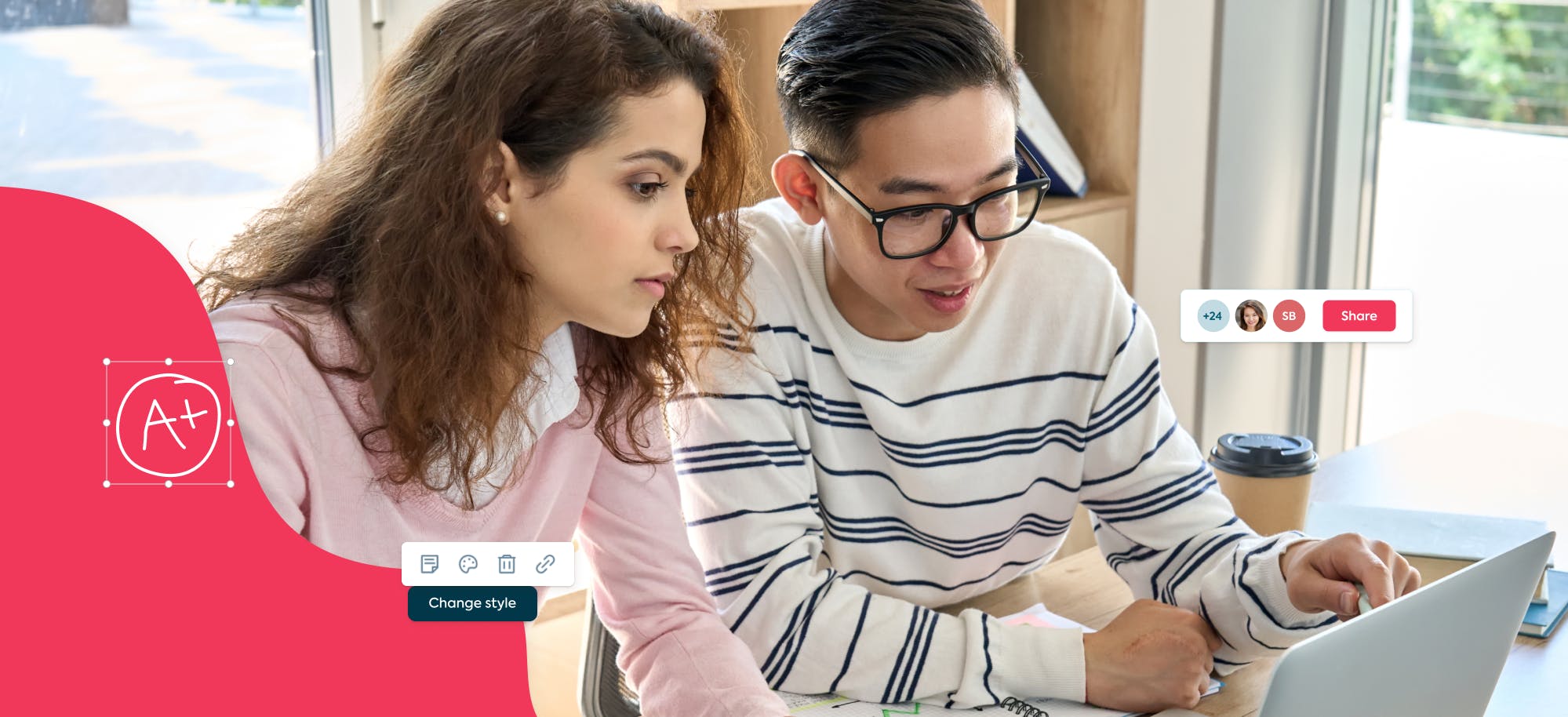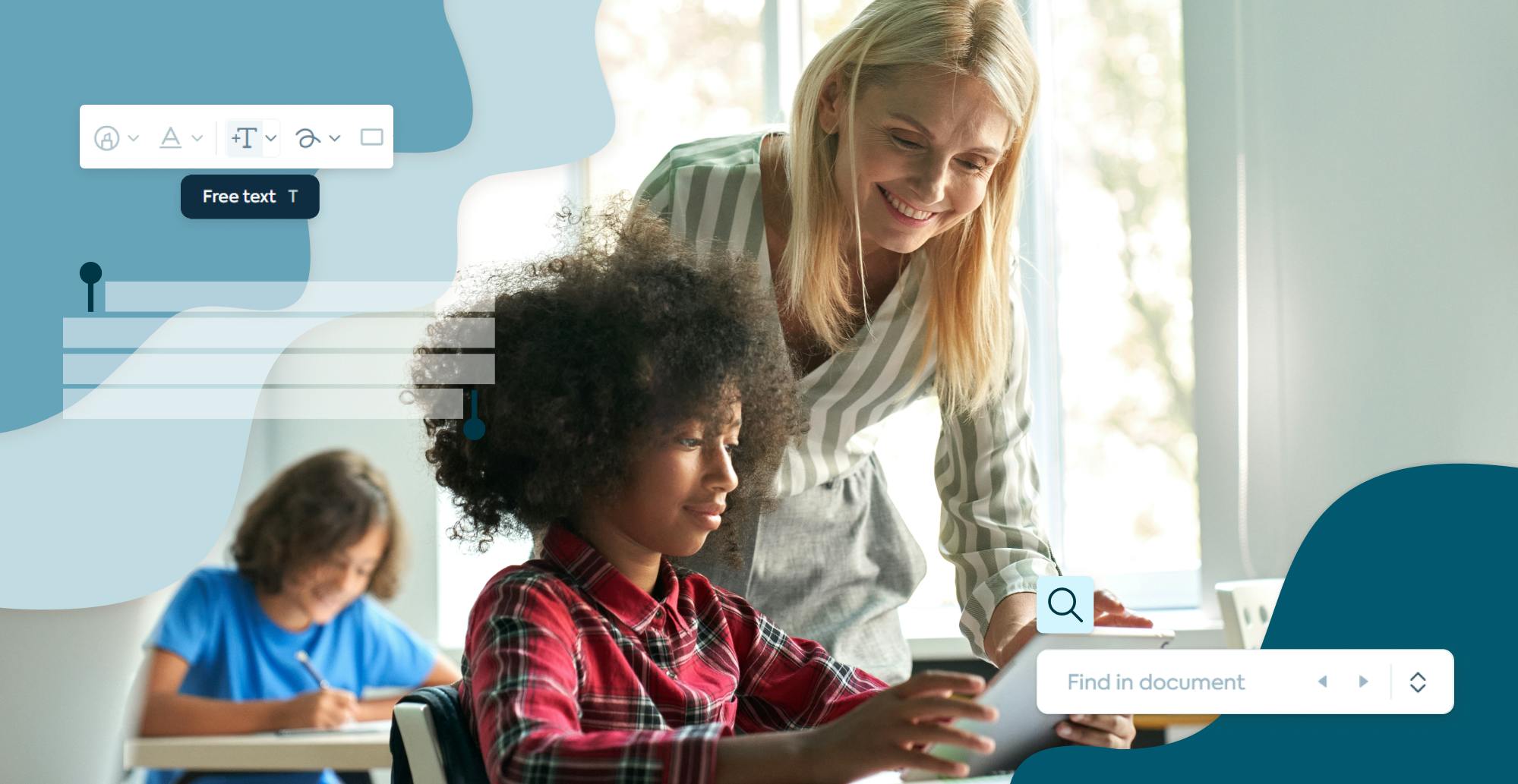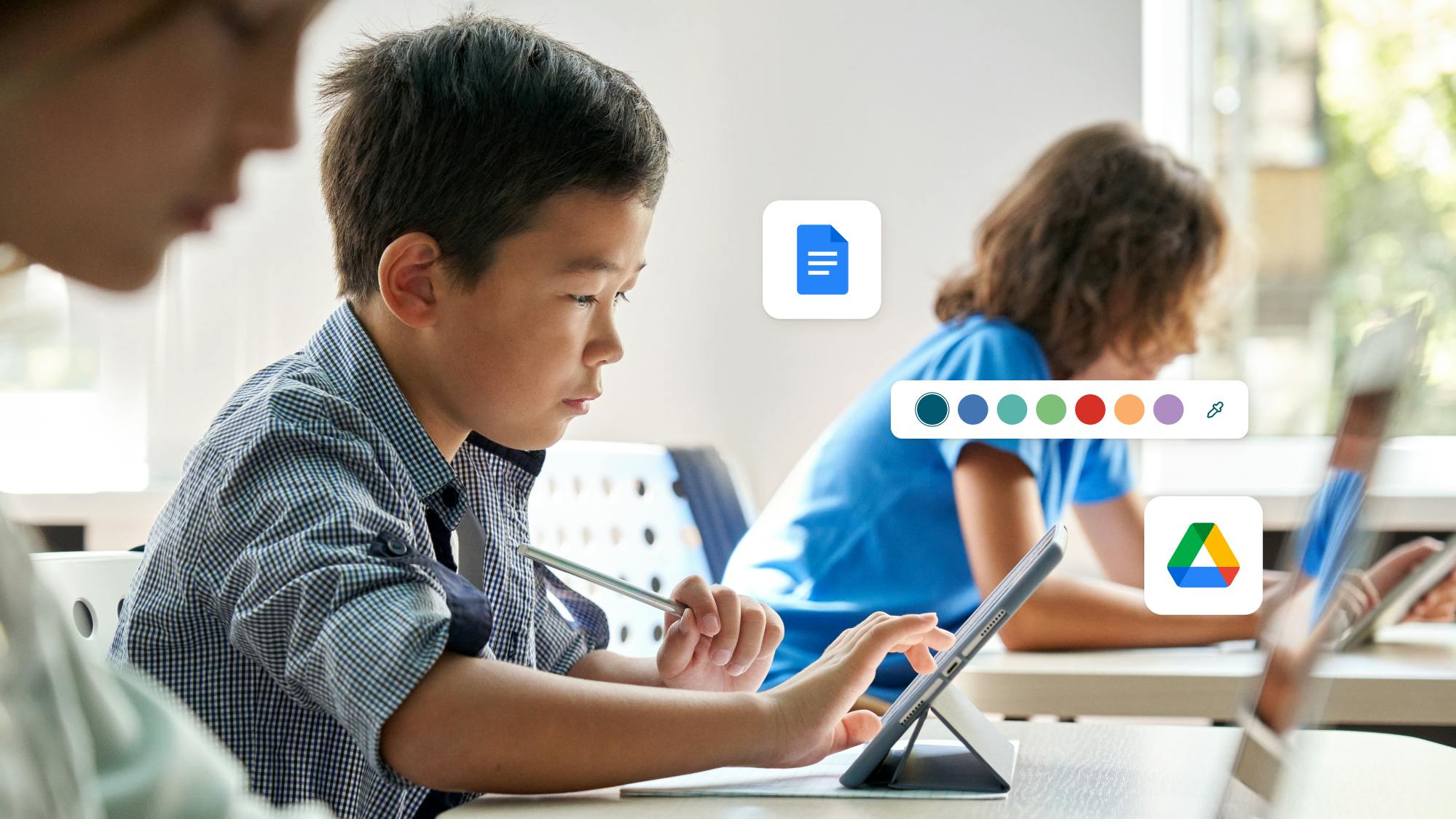Paperless classroom trends and implementation in 2022
author
Lumin staff
published
Apr 15, 2024
categories
Article
read time
5 mins

Every year, thousands upon thousands of pounds of paper are wasted. In today's digital age, most organizations, including schools, are no longer required to use paper.
Table of Contents
1. Why are schools going paperless?
2. What are the advantages of a paperless classroom?
3. How can teachers implement the paperless classroom idea?
4. What are the new trends in educational technology?
- 1. Why are schools going paperless?
- 2. What are the advantages of a paperless classroom?
- 3. How can teachers implement the paperless classroom idea?
- 4. What are the new trends in educational technology?
share this post
Why are schools going paperless?
Even if you don't want to fully commit to going paperless, new technology and school administration software make it easier than ever to cut your school's paper usage. Whether you're drowning in files or moving toward a digital-only future, there's only one way to go forward: cutting back on paper use. Here are the 4 biggest reasons schools are going paperless:
Students are more engaged
Digital learning is simple and intuitive for children who have grown up with the internet and touchscreens. Using less paper in the classroom not only saves money for your school, but it's also a step toward a more engaging, inclusive, and varied form of teaching.
Teachers have access to hundreds of education-specific apps and school administration tools. These technologies can be used in conjunction with or instead of traditional textbooks to bring the classroom to life for today's students. Instead of children and parents having to wait for big chunks of work to be marked, homework may be submitted online and teachers can provide feedback quickly and regularly.
Make more resources available
To adapt to diverse learning styles, you can use online student portals to make a variety of learning media available (such as podcasts and YouTube videos, in addition to online quizzes and assignments). Additional extra-curricular resources can also be made available to encourage students to do their own research.
Improve communication with parents
How many teachers' notes, report cards and other paper-based school communications have ended up crumpled at the bottom of a backpack and never made it to their intended destination? Sending parents messages digitally increases the likelihood that the parents will see the communication and reply accordingly.
Uninterrupted learning
When unforeseen circumstances call for it, paperless schools that already use online learning may easily transition to totally virtual education, but schools that rely on paper-based systems struggle to adapt, and many schools lose important teaching hours as a result. Going paperless has numerous advantages for your school's administration and educational capacities, not to mention its reputation.
What are the advantages of a paperless classroom?
Technology has become an integral aspect of our lives, especially in the academic world. Since the 1990s, when schools only had basic desktop computers, schools now have laptops and virtual reality in the classroom as the norm, so we can safely say that the advancement has been incredible in such a short time. The rapid advancement of technology in recent years has had a great impact on both teachers and students. The traditional classroom is already evolving and being moulded by technological advancements.
Paperless classrooms can definitely provide major benefits. The paperless technological approach is there to enhance the learning experience. Here are some ways in which going paperless in the classroom can benefit you:
Saves time
Paperwork is arguably the most time-consuming aspect of any job, but it is especially so in school administration. When it comes to grading, teaching, and providing feedback to students and parents, the school staff can save time by using a digital platform. Manual filing, numerous printing duties, and mailing letters home can all be handled more quickly by the admin staff. In general, going paperless is a good alternative to printing announcements and allows you to effortlessly communicate with students. In other words, any time-consuming activity is sped up, saving you money and resources in the long run!

Saves resources
Every year, schools spend an unthinkably large amount of money on paper. According to studies, a school uses about 1,000 sheets of paper per student every year. And, it goes without saying, but which school doesn't want to have more resources? Much of these savings could instead be used to support educational goals by paying for teacher salaries, field trips, or new school computers.
Environmentally-friendly
Paper is one of the most widely used resources on the planet, and it also causes significant environmental damage without us even realizing it. Reduced paper usage is a great way to help the environment (especially now that it's degrading). Every day, schools use a huge amount of paper, which includes piles of useless printouts, excess photocopies, and letters to parents that never make it home. Cutting down on paper use also introduces students to the concept of environmental awareness!
Saves space
Paper is not only bad for the environment, but it also takes up a lot of space. We all remember our elementary classrooms having walls covered in bookcases full of old documents that were almost certainly never used. As a result, classrooms and school offices are decluttered, allowing for more space to be used for other purposes. Additional offices, for example, or even extra classrooms, could be created instead.
Promotes collaboration

Digital tools allow for a completely new type of collaboration. Instead of being limited to learning in the classroom, students can use digital learning platforms to interact with their classmates before and after school. Parents can also monitor their children's progress by viewing student profiles, which include grades, comments, and other information. This can save time at parent-teacher conferences and teacher meetings by ensuring that everyone is aware of what is going well and where the student may require additional assistance.
Improves organization
A paperless approach has the significant benefit of allowing teachers to post class schedules and resources online for everyone to see. As a result, the risk of misplacement or disinformation is significantly reduced. Teachers will be more efficient and collaborative in their preparation, and the school administration will have a clear view of what is being taught in the classroom, which will benefit both teachers and students. Furthermore, the likelihood of a student's work going missing is considerably reduced.
Secures documents
Having documents stored on the cloud is generally safer than having paper documents laying around, where they could be stolen or misplaced. Access to these papers can be controlled centrally and even erased from mobile devices with the touch of a button in a cloud-based system. Staff may access the information they need from anywhere in the school with paperless document management, further saving themselves time. Additionally, all of your electronic papers are recoverable in the event of a disaster such as a fire, a break-in, or a flood.
Prepares students for the workplace
By introducing students to technology at an early age, we are better preparing them to enter the workforce in the future. In general, a large number of processes in the workplace have already been automated, therefore, automating educational processes is the natural next step. Employers don't expect employees to use a paper planner to stay organized or to physically write their performance goals, so why do we expect it from our students? Making everything available on a digital platform would be the best preparation for students. And, given that children as young as three years old use tablets and cellphones, this would likely be a more convenient way for them to learn and manage their schoolwork.
How can teachers implement the paperless classroom idea?

There are a few important decisions that need to be made when setting up a paperless classroom to guarantee the new classroom environment is going to be a success.
Select a Learning Management System
A learning management system (LMS) is a virtual classroom that enables educators to increase classroom productivity and manage time more efficiently. One example of this that most of us are familiar with is Google Classroom. Common features include interactive grade books, pages for parents, student discussion forums, polls, collaborative tools, and class calendars, all of which allow educators to manage their classrooms digitally.
Develop an implementation strategy
Transitioning to a paperless classroom requires more work than simply moving the same old assignments online. Teachers should reflect on their teaching methods and strategies, and then assess how technology may help them improve them. Educators may create, assign, and manage new tasks that work within the new learning environment and make classrooms more engaging.
What are the new trends in educational technology?

The past two years have been a tumultuous time for educational technology: never before has so much money been spent on so many gadgets in such a short amount of time.
Now that both children and adults have more access to the internet, here are some of the ed-tech trends we can expect to see throughout 2022.
Personalized learning
More devices were placed in the hands of students to assist the transition to home learning, and teachers created a huge amount of digital resources. Teachers will have more data about their students' progress as a result of more computer-based activities, allowing them to observe their students more closely.
The pandemic exposed discrepancies among students, such as the availability to digital gadgets, parental support for at-home learning, and even broadband speeds. There will be an emphasis on tools that can quickly assess what level pupils are working at and provide teachers with the resources they need to address specific gaps, with a parallel emphasis on making teachers' lives easier.
Focusing on student-teacher relationships
In 2022, you can expect to see educators embracing software that can blend the best of technology with the best of the classroom experiences and tools that extend the capabilities of very busy teachers by helping them personalize the learning experience.
Hybrid learning
Hybrid learning was a huge trend in 2021 and it shows no signs of slowing down! Although hybrid learning may have come about as a result of the pandemic, some students benefit from a combination of in-person and online teaching. Even if face-to-face learning is fully restored, hybrid learning will remain a preferred option for a small percentage of students.
Gamification
As with hybrid learning, gamification was a popular teaching style during the pandemic. Gamification in 2022 will also feature students generating their own content and collaborating with one another. Games are also a great way to reach students who have spent much of the last two years not only learning, but also socializing on the internet.
Teachers may manage most parts of a classroom using comprehensive classroom management apps and programs, which include anything from distributing and receiving work, to scheduling field trips and communicating with parents. These are frequently costly and time-consuming to deploy. Then there are standalone products, which are typically less expensive and easier to use, allowing them to be used at the school level or in individual classrooms. Lumin is one of them.
Because of Lumin's adaptability, it can be utilized for both teacher-led and digital teaching, personalizing classroom learning for each student. It has the following capabilities:
- Integration with Google Classroom,
- Add text, shapes and images,
- Annotation of documents in real-time,
- Text entry,
- Adding e-signatures,
- Working across multiple devices simultaneously.
share this post